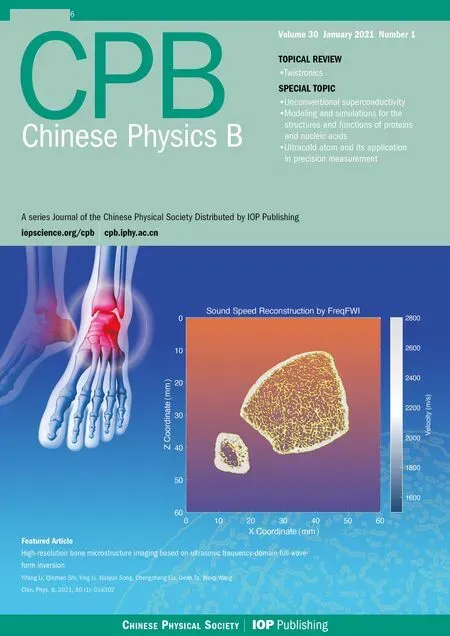Tip-induced superconductivity commonly existing in the family of transition-metal dipnictides MPn2*
Meng-Di Zhang(张孟迪), Sheng Xu(徐升), Xing-Yuan Hou(侯兴元), Ya-Dong Gu(谷亚东),Fan Zhang(张凡), Tian-Long Xia(夏天龙), Zhi-An Ren(任治安),4,†,Gen-Fu Chen(陈根富),4,‡, Ning Hao(郝宁), and Lei Shan(单磊),6,7,§
1Beijing National Laboratory for Condensed Matter Physics,Institute of Physics,Chinese Academy of Sciences,Beijing 100190,China
2School of Physical Sciences,University of Chinese Academy of Sciences,Beijing 100190,China
3Department of Physics,Beijing Key Laboratory of Opto-electronic Functional Materials&Micro-nano Devices,Renmin University of China,Beijing 100872,China
4Songshan Lake Materials Laboratory,Dongguan 523808,China
5Anhui Province Key Laboratory of Condensed Matter Physics at Extreme Conditions,High Magnetic Field Laboratory,Chinese Academy of Sciences,Hefei 230031,China
6Information Materials and Intelligent Sensing Laboratory of Anhui Province,Institute of Physical Science and Information Technology,Anhui University,Hefei 230601,China
7Key Laboratory of Structure and Functional Regulation of Hybrid Materials(Anhui University),Ministry of Education,Hefei 230601,China
Keywords: tip-induced superconductivity,topological,mechanism
1. Introduction
Topological materials, possessing a novel state with nonzero topological invariant and exotic surface states, have attracted considerable attention in condensed matter physics and material science in the last decade.[1–3]Whereupon, the concept of topological superconductivity with a gapped superconducting bulk state and gapless surface states was proposed by combining topological natures with superconductivity. Topological superconductivity is potentially useful for fault-tolerant quantum computing to significantly improve its efficiency. Intensive theoretical and experimental researches have been carried out in searching for topological superconductors (TSCs), e.g., charge carrier doping, high pressure, and proximity effect.[4–18]Very recently, tip-induced superconductivity (TISC) was observed in a variety of nonsuperconducting topological semimetals by means of pointcontact(PC),[19–27]which had aroused great enthusiasm in the research of topological superconductivity. So far, superconductivity has been induced in various topological materials,however, whether these phenomena share a common mechanism is still in debate.
In an earlier work,[27]we have successfully achieved tip-induced superconductivity on the topological semimetals TaAs2and NbAs2, which are the members of the transitionmetal dipnictides MPn2(M =Ta,Nb;Pn=P,As,Sb). A universal relationship between the zero-temperature upper critical field Hc2(0)and the critical temperature Tcwas uncovered for both compounds and different crystal orientations. The findings identify a bulk band rather than surface states playing the dominant role in the induced superconductivity. The consistent results predict a great possibility to realize superconductivity in other members of the MPn2family possessing similar band structures.
In this paper, we performed PC experiments on NbSb2,another member of the MPn2family[28,29]and successfully achieved TISC,yielding the same universal Hc2(0)vs. Tcrelationship for TaAs2and NbAs2. This suggests that the TISC on topological materials may have a common mechanism related to their specific band features. It was also found that local superconductivity can be triggered by magnetic tips of Co and Ni as well as nonmagnetic tips, implying an unconventional pairing component.
2. Experiment


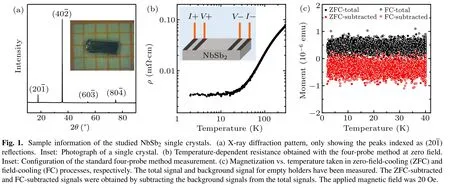
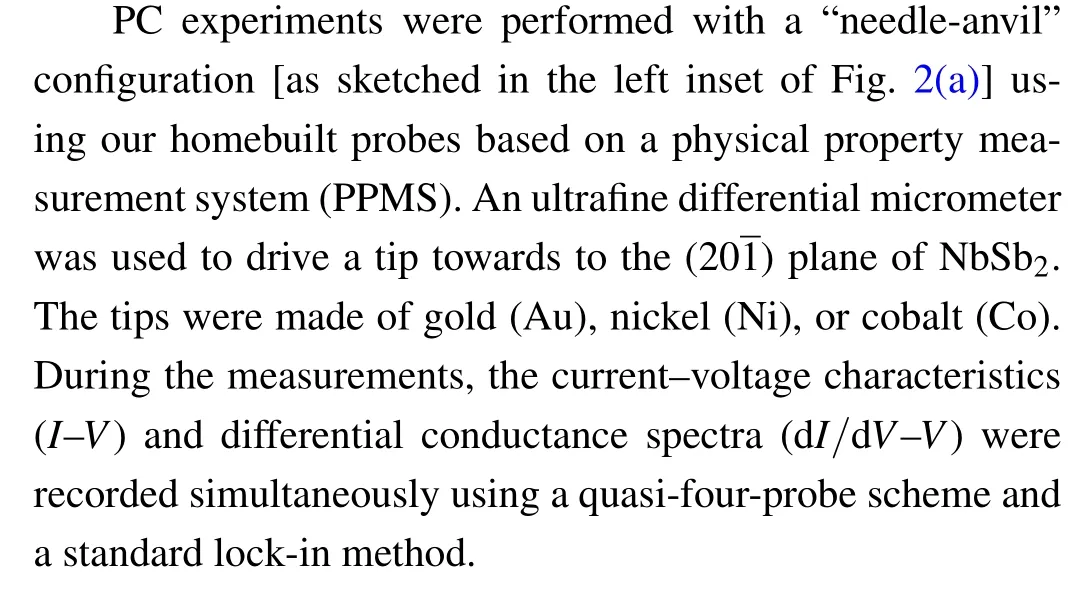
3. Results and discussion
Figure 2(a)shows a series of spectra taken at a PC formed between a NbSb2single crystal and an Au tip. The low temperature spectra exhibit a spurious zero-bias conductance peak(ZBCP) accompanied by two symmetric conductance dips.These features are most probably caused by the critical current effect, the same as that on previously studied TaAs2or NbAs2.[27]Under this circumstance, i.e., the thermal regime,inelastic scattering of electrons causes Joule heating and a local rise in temperature. Hence, a superconducting-to-normal transition will occur at a critical current Ic,[32,33]resulting in the ZBCP and dips mentioned above.The ZBCP resulted from the critical current effect is extrinsic,from which we could not determine the amplitude of the superconducting gap or pairing symmetry,though an unconventional superconductor,e.g.,with a p- or d-wave pairing, can give an intrinsic ZBCP for some specific current injecting directions due to the formation of Andreev bound states.[7,32,34–37]Nonetheless, superconducting transition temperature Tcand upper critical field Hc2can be determined from the temperature and field evolutions of the measured PC spectra, since the spectral features originate from superconductivity and vanish at the critical temperatures or fields. Thus, we define Tc(Hc2) as the temperature (magnetic field) where the superconducting signal is completely suppressed. Figure 2(b)shows the field dependent spectra of the same PC in Fig.2(a)where the spectra features decay gradually with the increasing field. Figure 2(c)shows the temperature-dependent zero-bias resistance (ZBR)curves extracted from the temperature evolutions of the PC spectra obtained under various magnetic fields. The superconducting transition shifted continuously to lower temperature with increasing field from which we could determine Hc2(T)by the points where the superconducting features vanish. The obtained parameters fulfill the empirical formula of Hc2(T)=Hc2(0)[1-(T/Tc)2]with Tc~5.75 K and Hc2(0)~2.1 T,as demonstrated in Fig.2(d).
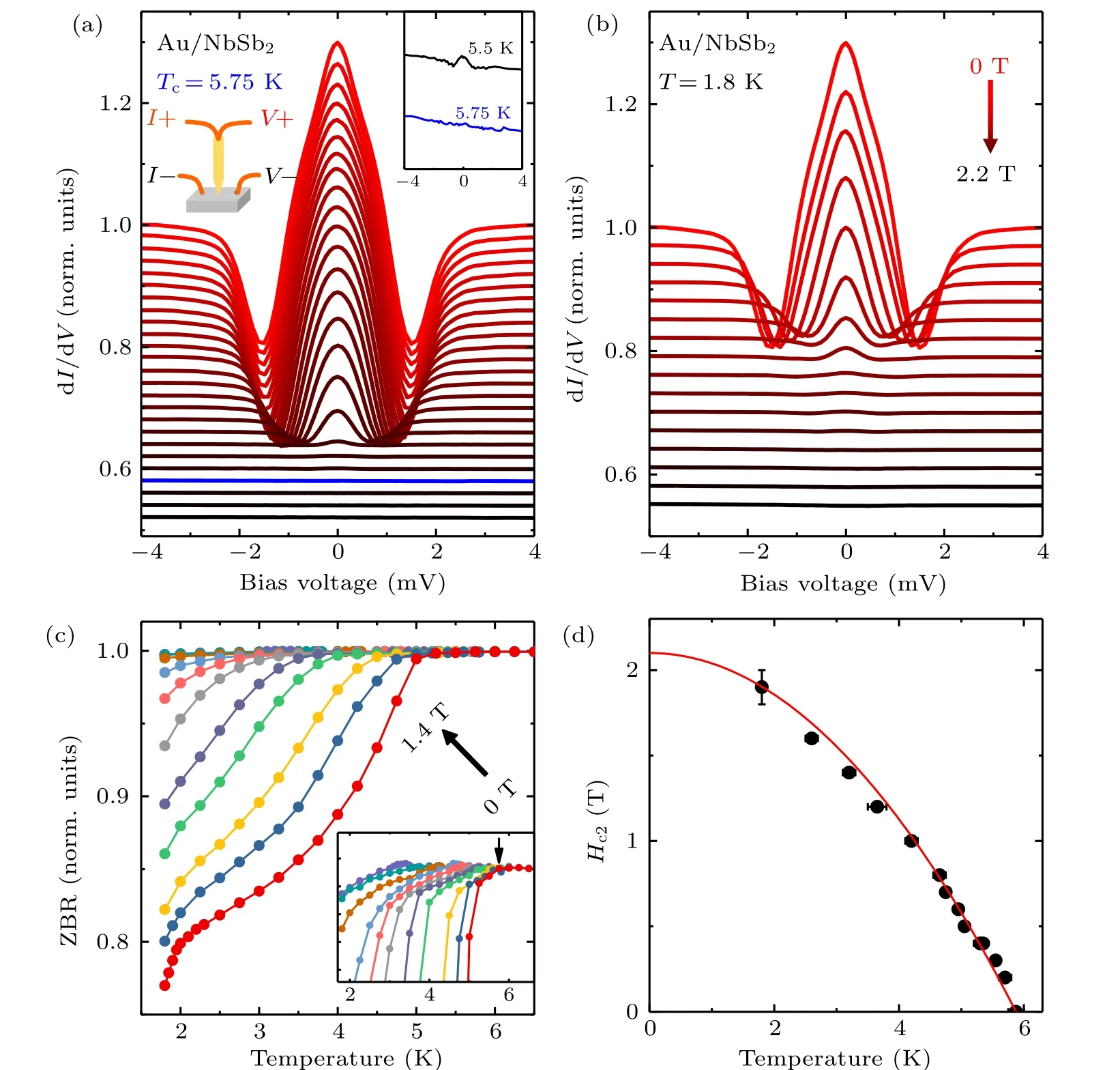
Fig.2. Evidences of TISC at Au/NbSb2 point contacts. (a)Temperature evolutions of PC spectra from 1.8 K to 6.5 K,the temperature intervals are 0.05 K between 1.8 K and 2.0 K, 0.1 K between 2.0 K and 2.3 K, and 0.25 K above 2.3 K. The curve around the critical temperature is denoted by the blue line. The spectra have been normalized and shifted for clarity(similarly hereinafter). Left inset: Schematic diagram of the PC measurement configuration. Right inset: Zoom in the spectra near Tc. (b) Magnetic field evolutions of the PC spectra taken at the same PC in(a). The field is applied perpendicular to the plane of the sample(similarly hereinafter), with a step of 0.2 T between 0 T and 0.2 T,a step of 0.1 T between 0.2 T and 0.8 T,a step of 0.2 T between 0.8 T and 1.8 T,and a step of 0.1 T between 1.8 T and 2.0 T.(c)Temperaturedependent ZBR taken from the spectra measured under various magnetic fields. Inset: Details near the superconducting transitions. (d)Hc2(T)determined from the temperature evolutions of the PC spectra measured under various magnetic field. The solid line indicates an empirical formula of Hc2(T)=Hc2(0)[1-(T/Tc)2]with appropriate parameters.
In order to get further insight into the induced superconductivity detected at the PCs on NbSb2,we have studied a series of PCs formed with various metal tips(including nonmagnetic tips of Au and ferromagnetic tips of Ni and Co). As exemplified in Figs.3(a)and 3(b),similar to TaAs2and NbAs2,local superconductivity can also be triggered on NbSb2by ferromagnetic tips of Ni and Co as well as the nonmagnetic tip of Au. The experimental occasionality can be ruled out due to the great repeatability of the experiments.It is well known that ferromagnetism will suppress conventional superconductivity by breaking spin-singlet paring.[38–40]Hence the compatibility between TISC and ferromagnetism indicates its unconventional nature.[41–44]

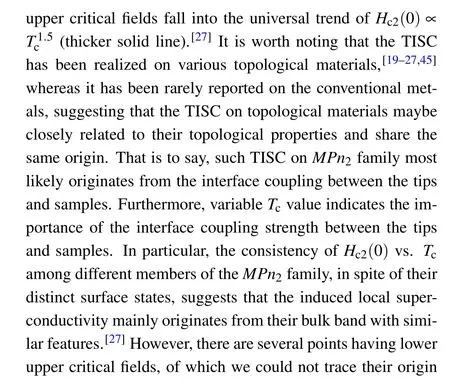


Fig.3. Evidences of TISC using ferromagnetic tips on NbSb2. (a)A set of PC spectra measured at a Co/NbSb2 point contact from 1.8 K to 3.2 K.(b)A set of PC spectra measured at a Ni/NbSb2 point contact from 1.8 K to 3.0 K.
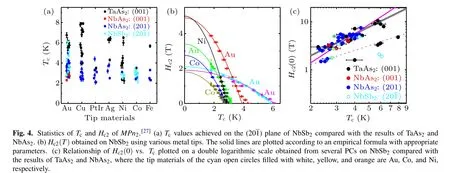
4. Conclusion
In summary, we have induced local superconductivity at point contacts formed on the NbSb2single crystals using both nonmagnetic tips and ferromagnetic tips,which can be divided into two categories according to the values of the upper critical field. This is in good agreement with the results of TaAs2and NbAs2studied previously. The findings here confirm the previous expectation and indicate that the topological nature may play an important role in TISC. The consistent results from different members of the MPn2family support that bulk bands,instead of surface states,are the major origin of the induced superconductivity. Therefore,MPn2is a good platform for further understanding the mechanism of TISC.
- Chinese Physics B的其它文章
- Numerical simulation on ionic wind in circular channels*
- Interaction properties of solitons for a couple of nonlinear evolution equations
- Enhancement of multiatom non-classical correlations and quantum state transfer in atom–cavity–fiber system*
- Protein–protein docking with interface residue restraints*
- Effect of interaction between loop bases and ions on stability of G-quadruplex DNA*
- Retrieval of multiple scattering contrast from x-ray analyzer-based imaging*

